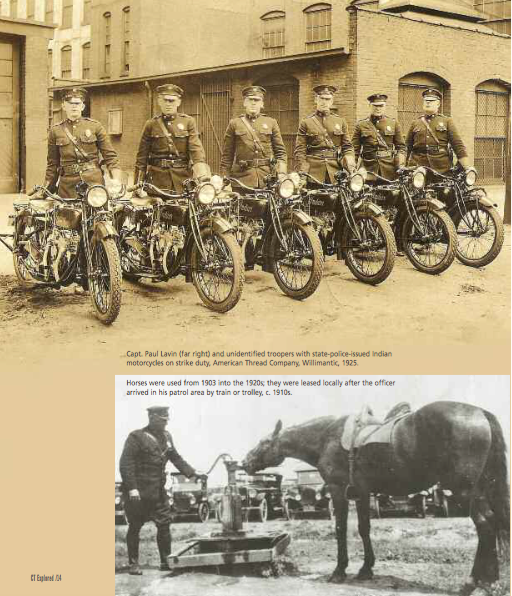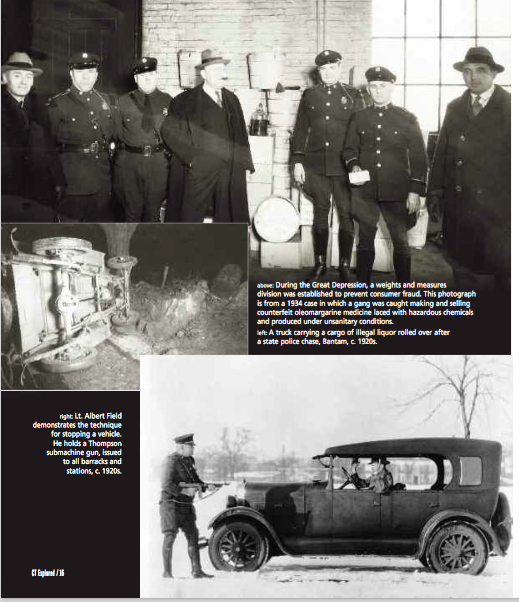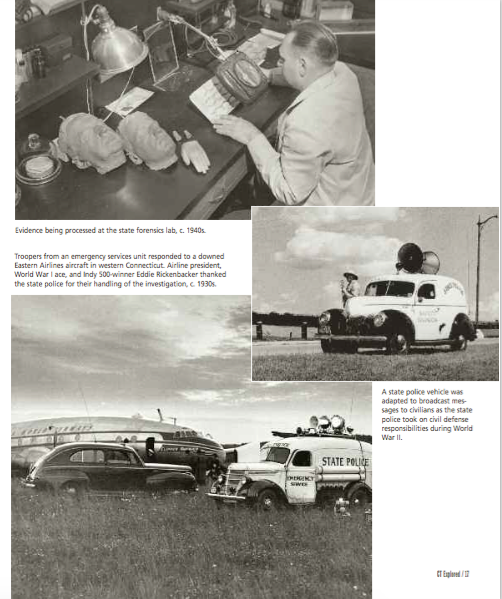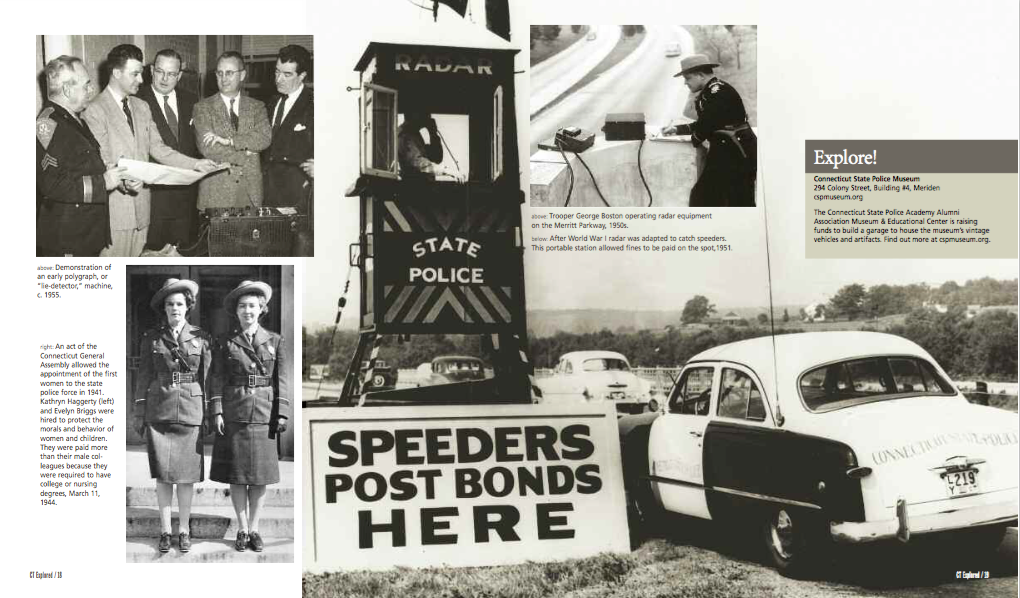By Matthew Karwowski FALL 2016
 What was the genesis of the Connecticut State Police? In a word—drink. Through the 19th century Connecticans had a complicated relationship with alcohol. The state’s active temperance movement railed against the evils of drink, but laws regulating alcohol were inconsistently enforced. In 1871 a bill seeking to establish a state police force to combat sale of alcohol on Sundays and on the black market and to address corruption in local law enforcement was defeated—in part because sheriffs and constables would lose revenue from serving subpoenas and other functions if those duties were taken over by a state police. This contrasted with Massachusetts, which formed its state constabulary—for the same purpose: enforcement of state liquor regulations—in 1865 (Rhode Island’s formed late, in 1925.)
What was the genesis of the Connecticut State Police? In a word—drink. Through the 19th century Connecticans had a complicated relationship with alcohol. The state’s active temperance movement railed against the evils of drink, but laws regulating alcohol were inconsistently enforced. In 1871 a bill seeking to establish a state police force to combat sale of alcohol on Sundays and on the black market and to address corruption in local law enforcement was defeated—in part because sheriffs and constables would lose revenue from serving subpoenas and other functions if those duties were taken over by a state police. This contrasted with Massachusetts, which formed its state constabulary—for the same purpose: enforcement of state liquor regulations—in 1865 (Rhode Island’s formed late, in 1925.)
In response to the legislative defeat, in the 1890s, citizens groups called Law and Order Leagues formed to pressure local constables and sheriffs to “enforce the State Liquor and vice laws, which at the time were being ignored by local authorities,” according to the Connecticut State Police Museum website (cspmuseum.org). A second such bill was defeated in 1899. Finally, in 1903, Governor Abiram Chamberlain signed House Bill #247 authorizing the creation of the Connecticut State Police.
The five newly appointed officers’ main duties were to enforce liquor laws, prevent crime, preserve peace, and identify, pursue, and apprehend criminals. Jerry Longo, a retired state police trooper, tells this story in his Images of America: Connecticut State Police (Arcadia Publishing, 2013).
The state police’s early years saw rapid change and development. They needed to adapt and evolve as fast as the criminals they pursued. Troopers initially patrolled on horseback and used public transportation such as the trolley and train. In 1911 troopers acquired their first motorcycles. Motorcycles, however, were dangerous. Though high mortality rates resulted, the favored mode of transportation wasn’t phased out for decades. Patrol cars were introduced by 1920, but since they looked identical to civilian cars, they caused public confusion. The solution was to remove the tops—year round. Marked patrol cars weren’t adopted until the 1940s.
the criminals they pursued. Troopers initially patrolled on horseback and used public transportation such as the trolley and train. In 1911 troopers acquired their first motorcycles. Motorcycles, however, were dangerous. Though high mortality rates resulted, the favored mode of transportation wasn’t phased out for decades. Patrol cars were introduced by 1920, but since they looked identical to civilian cars, they caused public confusion. The solution was to remove the tops—year round. Marked patrol cars weren’t adopted until the 1940s.
In 1920 the 18th amendment to the U.S. Constitution brought prohibition to the state, and the chase was on. By 1921 the state police had 50 troopers, and seven barracks were established around the state. The police took to the skies in aircraft to locate stills and cockfighting rings in forests across the state. With the advent of flight, the police had to develop new protocols to deal with plane crashes. In 1930 the state police began to keep records of all criminal photographs and fingerprints. They adopted use of canines, two-way radios, and field sobriety tests.

World War II gave the state police new roles: providing emergency services and patrolling the Connecticut coastline for enemy combatants. In 1941 the first women were accepted into the force, though Zola Bennett of Woodstock Valley, Connecticut and listed officially as a clerk, had served as an investigator in the 1910s and 1920s, most famously of the case that became the basis for the classic film Arsenic and Old Lace.
After the war, military technologies such as radar were converted for civilian applications. Radar booths were set up along the highways, and speeders could pay fines on the spot. Forensics also advanced, including testing for ballistics. In 1964 Albert Washington of Branford became the first African American Connecticut state trooper, followed a few years later by the first female African American trooper, Louise Smith of Durham.
The state police share a brotherhood not unlike that of those in the armed services. A Meriden museum dedicated to the history of the state police is funded and run by former state troopers. Watch a YouTube video tour of the museum at youtube.com/watch?v=U8ymRdL1FKE&feature=youtu.be.
Matthew Karwowski graduated from Central Connecticut State University last May and was an intern for Connecticut Explored.
Explore!
Connecticut State Police Museum
294 Colony Street, Building #4, Meriden
Cspmuseum.org
The Connecticut State Police Academy Alumni Association Museum & Educational Center (CSPAAAMEC) is raising funds to build a garage to house the museum’s vintage vehicles and artifacts. Find out more at cspmuseum.org.
